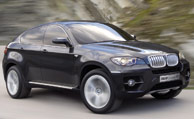
The 2011 Kia Optima launches a new generation for Kia’s mainstay midsize sedan, highlighted by the company’s first hybrid powertrain option. The all-new Optima is expected at dealerships in the United States by the end of September 2010, with a choice of two new, impressively powerful four-cylinder engines. The first-ever Optima Hybrid will follow by spring 2011, promising fuel economy approaching 40 mpg EPA Combined. The 2011 Optima has an engaging new look, more room inside and an infusion of features at Kia’s typical, value-laden prices.
By exterior dimensions, the 2011 Optima roughly matches top-selling midsize sedans such as the Ford Fusion, Honda Accord and Toyota Camry. It’s nearly identical is size to its corporate sibling, the recently launched Hyundai Sonata. Optima and Sonata share the same basic platform and key mechanical components, but they look substantially different. The Sonata is rounder, more curvaceous and perhaps more luxurious, in the fashion of a Lexus. The Optima is more angular. It looks edgier, and in our view, faster. It will be offered with wheels up to 18 inches in diameter, in an aggressive turbine-blade design. Both of its gasoline engines feature fuel-efficient, emissions-cutting direct fuel injection. The base 2.4-liter four-cylinder delivers 200 horsepower, or more than the base engine in any competitor, including the Chevy Malibu and Nissan Altima. The standard Optima engine will be offered with either a six-speed manual or six-speed automatic transmission. The upgrade engine is a smaller, 2.0-liter four-cylinder, but this one is turbocharged for an extra dose of power. It will generate 274 hp, though it won’t be offered with the manual transmission. That’s more power than the substantially larger, upgrade V6 engines offered by Optima’s American or Japanese competitors.
Kia has released little information on the Optima’s optional hybrid powertrain, but we can be sure it’s closely related to that in the new Hyundai Sonata Hybrid. Its gasoline engine will likely be tuned for optimal fuel economy, with less power than the base, gas-only four-cylinder, but boosted by a 40-hp electric motor. Combined maximum horsepower should exceed 200, and EPA mileage ratings should mirror those for the Sonata Hybrid (37 mpg City, 39 mpg Highway, or 38 mpg Combined).
The new unit-body platform has substantially more high-strength steel than its predecessor, according to Kia, with new noise and vibration reducing features. That could mean substantially smoother, quieter operation. Inside, the new Optima features a cockpit-style dashboard and high center console that wrap around the driver. Cars equipped with the automatic transmission will get shift paddles on the steering column. The three-place rear seat splits and folds flat 60/40, expanding cargo area from the trunk.
Upgrades include a power panoramic sunroof, leather seating, driver’s seat memory, heated and cooled front seats, heated rear seats and Infinity surround-sound audio with HD radio, eight speakers and more than 500-watts of system power. The optional navigation system will feature voice activation and a seven-inch, high resolution screen. The 2011 Optima will come with dual-threshold front-impact airbags, front seat-mounted side impact airbags, full-cabin head protection curtains, front active headrests and side-impact door beams. Active safety features include four-wheel antilock brakes with brake assist and electronic stability control.
Optima trim levels should not change from the 2010 model, with standard LX, a more luxurious EX and a sport-trimmed SX. The 2010 base price of $17,995 shouldn’t increase more than $500, and we’d peg the turbocharged SX at around $23,000. If Kia takes its familiar more-for-the-money approach with the Optima hybrid, it could retail for as much as $3,000-$4,000 less than other mid-size hybrid sedans.







